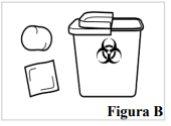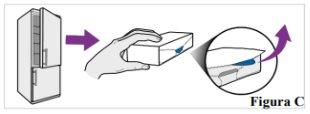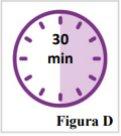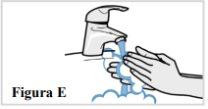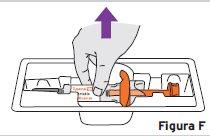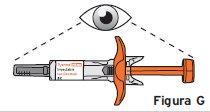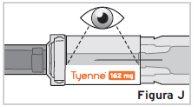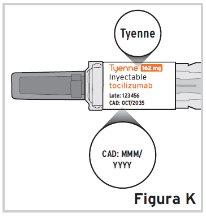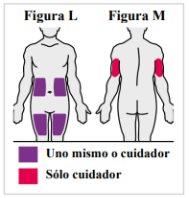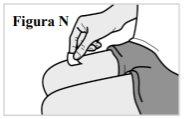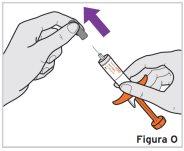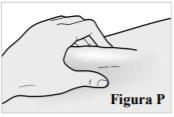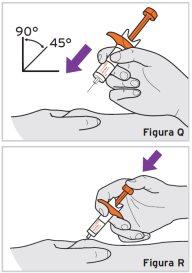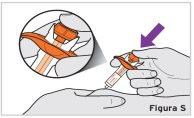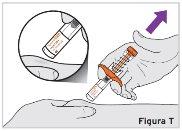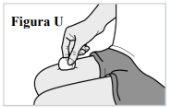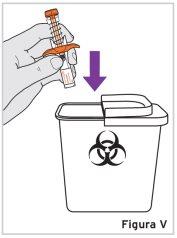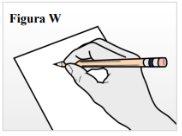
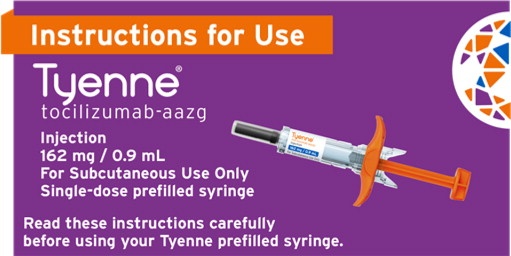
ТІЄННЕ 162 мг РОЗЧИН ДЛЯ ІН'ЄКЦІЙ У ПЕРЕДНАПОВНЕНИХ ШПРИЦАХ


Інструкція із застосування ТІЄННЕ 162 мг РОЗЧИН ДЛЯ ІН'ЄКЦІЙ У ПЕРЕДНАПОВНЕНИХ ШПРИЦАХ
Введення
Опис: інформація для користувача
Tyenne 162 мг розчин для ін'єкцій у попередньо заповненому шприці
тоцілізумаб
Цей лікарський засіб підлягає додатковому моніторингу, що прискорить виявлення нової інформації про його безпеку. Ви можете допомогти, повідомляючи про будь-які побічні ефекти, які ви можете відчувати. Остання частина розділу 4 містить інформацію про те, як повідомляти про ці побічні ефекти.
Прочитайте уважно весь опис перед тим, як почати використовувати цей лікарський засіб, оскільки він містить важливу інформацію для вас.
- Збережіть цей опис, оскільки вам може знадобитися знову його прочитати.
- Якщо у вас є якісь питання, проконсультуйтеся з вашим лікарем, фармацевтом або медсестрою.
- Цей лікарський засіб призначений тільки вам, і не слід давати його іншим людям, навіть якщо вони мають相同ні симптоми, оскільки це може їм нашкодити.
- Якщо ви відчуваєте побічні ефекти, проконсультуйтеся з вашим лікарем, фармацевтом або медсестрою, навіть якщо це побічні ефекти, які не вказані в цьому описі. Див. розділ 4.
Окрім цього опису, вам буде надано Картку інформації для пацієнта, яка містить важливу інформацію про безпеку, яку вам потрібно знати перед прийомом і під час лікування Tyenne.
Зміст опису
- Що таке Tyenne і для чого він використовується
- Що потрібно знати перед тим, як почати використовувати Tyenne
- Як використовувати Tyenne
- Можливі побічні ефекти
- Зберігання Tyenne
- Зміст упаковки та додаткова інформація
1. Що таке Tyenne і для чого він використовується
Tyenne містить активну речовину тоцілізумаб, яка є білком, отриманим з імунних клітин (моноклональне антитіло), що блокує дію певного типу білка (цитокину) під назвою інтерлейкін-6. Цей білок залучений до запальних процесів в організмі, і блокуючи його, можна зменшити запалення. Tyenne призначений для лікування:
- дорослих з активною ревматоїдною артритом (РА) середньої чи важкої ступеня, яка є автоімунною хворобою, якщо попередні методи лікування не були ефективними.
- дорослих з важкою, активною та прогресуючою ревматоїдною артритом (РА), які не були попередньо лікувані метотрексатом.
Tyenne допомагає зменшити симптоми РА, такі як біль і набухання суглобів, і також може покращити вашу здатність виконувати щоденні завдання. Tyenne довів свою ефективність у зменшенні прогресії пошкодження хряща і кісток суглобів, викликаного хворобою, і покращенні вашої здатності виконувати щоденні діяльності.
Tyenne зазвичай використовується в поєднанні з іншим лікарським засобом для лікування РА під назвою метотрексат. Однак Tyenne можна призначати самостійно, якщо ваш лікар визначить, що метотрексат не підходить.
- дорослих з хворобою артерій, яка називається гігантоклітинним артерітом (ГКА), викликаною запаленням великих артерій організму, особливо тих, які постачають кров до голови та шиї. Симптоми можуть включати головний біль, втому (знесиління) та біль у щелепі. Ефекти можуть включати інсульт та сліпоту.
Tyenne може зменшити біль і набухання артерій і вен голови, шиї та рук.
ГКА часто лікується лікарськими засобами, які називаються стероїдами. Зазвичай вони ефективні, але можуть мати побічні ефекти, якщо їх використовувати у високих дозах протягом тривалого часу. Зменшення дози стероїдів також може привести до загострення ГКА. Додавання Tyenne до лікування робить час використання стероїдів коротшим, при цьому продовжуючи контролювати хворобу.
- дітей і підлітків у віці від 1 року і старше з активною ювенільною ідіопатичною артритом (ЮІА) системного типу, який є запальним захворюванням, що викликає біль і набухання в одному або декількох суглобах, а також лихоманку та висип.
Tyenne використовується для покращення симптомів ЮІА. Його можна призначати в поєднанні з метотрексатом або самостійно.
- дітей і підлітків у віці від 2 років і старше з активною ювенільною ідіопатичною артритом (ЮІА) поліартикулярного типу. Це запальне захворювання, яке викликає біль і набухання в одному або декількох суглобах.
Tyenne використовується для покращення симптомів ЮІА. Його можна призначати в поєднанні з метотрексатом або самостійно.
2. Що потрібно знати перед тим, як почати використовувати Tyenne
Не використовуйте Tyenne
- Якщо ви або дитина, за якою ви доглядаєте, алергічні на тоцілізумаб або на будь-який інший компонент цього лікарського засобу (перелічені в розділі 6).
- Якщо у вас або у дитини, за якою ви доглядаєте, є тяжка активна інфекція.
Якщо ви відчуваєте щось з цього, проконсультуйтеся з лікарем. Не використовуйте Tyenne.
Попередження та застереження
Проконсультуйтеся з лікарем, фармацевтом або медсестрою перед тим, як почати використовувати Tyenne.
- Якщо ви відчуваєте алергічні реакціїтипу відчуття стискання грудної клітки, свистіння, головокружіння або сильного головокружіння, набухання губ, язика, обличчя або висип, свербіж, протягом або після ін'єкції, повідомте своєму лікареві негайно.
- Якщо ви відчували будь-які симптоми алергічної реакції після введення Tyenne, не приймайте наступну дозу, поки не проконсультуєтеся з лікарем і не отримаєте вказівок щодо прийому наступної дози.
- Якщо у вас є будь-який тип інфекції, короткочасної або тривалої, або якщо ви часто захворюєте на інфекції. Негайно повідомте своєму лікареві, якщо ви почуваєтеся погано. Tyenne може зменшити здатність вашого організму реагувати на інфекції і зробити існуючу інфекцію гіршою або збільшити ймовірність отримання нової інфекції.
- Якщо ви мали туберкульоз, повідомте своєму лікареві. Ваш лікар перевірить ознаки та симптоми туберкульозу перед тим, як почати лікування Tyenne. Негайно повідомте своєму лікареві, якщо симптоми туберкульозу (тривалий кашель, вагова недостатність, загальна слабкість, субфебрилітет), або будь-яка інша інфекція з'являються під час або після лікування.
- Якщо ви мали виразку кишечника або дивертикуліт, повідомте своєму лікареві. Симптоми можуть включати біль у животі та зміни у кишковому русі з лихоманкою.
- Якщо у вас є хвороба печінки, повідомте своєму лікареві. Перед тим, як використовувати Tyenne, ваш лікар проведе аналіз крові для визначення функції печінки.
- Якщо пацієнт був щеплений недавно, або планує щеплення, повідомте своєму лікареві. Усі пацієнти повинні бути вакциновані згідно з календарем вакцинації перед тим, як почати лікування Tyenne. Деякі типи вакцин не повинні вводитися під час лікування Tyenne.
- Якщо у вас є рак, повідомте своєму лікареві. Ваш лікар повинен вирішити, чи можете ви продовжувати лікування Tyenne.
- Якщо у вас є фактори ризику серцево-судинних захворювань, такі як підвищення артеріального тиску, та високі рівні холестерину, повідомте своєму лікареві. Ці фактори повинні бути контролюються під час лікування Tyenne.
- Якщо у вас є проблеми з ниркамисередньої чи важкої ступеня, ваш лікар буде спостерігати за вами.
- Якщо у вас є тривалі головні болі.
Ваш лікар проведе аналіз крові перед тим, як ви почнете лікування Tyenne, щоб визначити, чи маєте ви низький рівень білих кров'яних тілець, низький рівень тромбоцитів або підвищення рівня печінкових ферментів.
Діти та підлітки
Не рекомендується введення Tyenne у дітей молодше 1 року.
Tyenne не повинен призначатися дітям з ЮІА (ювенільний ідіопатичний артрит) з вагою нижче 10 кг.
Якщо дитина має історію синдрому активації макрофагів(активація та неконтрольоване розмноження певних кров'яних клітин), повідомте своєму лікареві. Ваш лікар повинен вирішити, чи можна призначати Tyenne.
Інші лікарські засоби та Tyenne
повідомте своєму лікареві, якщо ви приймаєте будь-які інші лікарські засоби, або приймали їх недавно. Це пов'язано з тим, що Tyenne може впливати на дію деяких лікарських засобів, і може знадобитися корекція дози. повідомте своєму лікареві, якщо ви використовували недавно лікарські засоби, які містять такі активні речовини:
- метилпреднізолон, дексаметазон, які використовуються для зменшення запалення,
- сімвастатин або аторвастатин, які використовуються для зменшення рівня холестерину,
- антагоністи кальцієвих каналів (наприклад, амлодипін), які використовуються для лікування підвищення артеріального тиску,
- теофілін, який використовується для лікування астми,
- варфарин або фенпрокумон, які використовуються як антикоагулянти,
- фенітоїн, який використовується для лікування судом,
- циклоспорин, який використовується при трансплантації органів як імунодепресант,
- бензодіазепіни (наприклад, темазепам), які використовуються для заспокоєння тривоги.
Відносно вакцин, див. розділ попереджень вище.
Через відсутність клінічного досвіду не рекомендується використання Tyenne з іншими біологічними лікарськими засобами, які використовуються для лікування РА, ЮІА, ЮІАп або ГКА.
Вагітність та лактація
Tyenne не повинен використовуватися під час вагітності, окрім випадків, коли це явно необхідно. Поговоріть зі своїм лікарем, якщо ви вагітні, думаєте, що можете бути вагітною, або плануєте вагітність.
Жінки репродуктивного віку повинні використовувати ефективні методи контрацепції під час та до 3 місяців після закінчення лікування.
Перервіть годування грудьми, якщо починаєте лікування Tyenne, і проконсультуйтеся з лікарем. Перед тим, як відновити годування грудьми, повинні пройти принаймні 3 місяці з моменту останнього лікування Tyenne. Невідомо, чи виділяється Tyenne з грудним молоком.
Водіння транспортних засобів та використання машин
Цей лікарський засіб може викликати головокружіння, якщо ви відчуваєте головокружіння, не водьте транспортні засоби та не використовуйте машини.
Tyenne містить натрій
Цей лікарський засіб містить менше 23 мг натрію (1 ммоль) на дозу 0,9 мл, тобто є «практично безнатрієвим».
3. Як використовувати Tyenne
Слідуйте точно інструкціям щодо введення цього лікарського засобу, вказаним вашим лікарем, фармацевтом або медсестрою. У разі сумнівів проконсультуйтеся з лікарем, фармацевтом або медсестрою знову.
Лікування повинно бути розпочате кваліфікованим медичним працівником, який має досвід у діагностиці та лікуванні РА, ЮІА, ЮІАп або ГКА.
Дорослі з РА чи ГКА
Рекомендована дозадля дорослих з РА (ревматоїдний артрит) та ГКА (гігантоклітинний артеріїт) становить 162 мг (зміст попередньо заповненого шприца) один раз на тиждень.
Діти та підлітки з ЮІА (від 1 року та старше)
Звичайна доза Tyenne залежить від ваги пацієнта.
- Якщо пацієнт важить менше 30 кг: доза становить 162 мг (зміст 1 попередньо заповненого шприца), один раз на 2 тижні
- Якщо пацієнт важить 30 кг або більше: доза становить 162 мг (зміст 1 попередньо заповненого шприца), один раз на тиждень
Діти та підлітки з ЮІАп (від 2 років та старше)
Звичайна доза Tyenne залежить від ваги пацієнта.
- Якщо пацієнт важить менше 30 кг: доза становить 162 мг (зміст 1 попередньо заповненого шприца), один раз на 3 тижні.
- Якщо пацієнт важить 30 кг або більше: доза становить 162 мг (зміст 1 попередньо заповненого шприца), один раз на 2 тижні.
Tyenne вводиться шляхом ін'єкції під шкіру (підшкірно). Спочатку ваш лікар або медсестра можуть вводити Tyenne. Однак ваш лікар може вирішити, що ви самі можете вводити Tyenne. У цьому випадку ви отримаєте інформацію про те, як вводити Tyenne самостійно. Батьки та опікуни отримають інструкції про те, як вводити Tyenne дітям, які не можуть вводити його самостійно, наприклад, дітям.
Поговоріть зі своїм лікарем, якщо у вас є якісь питання щодо самостійного введення ін'єкції або введення ін'єкції дитині, за якою ви доглядаєте. В кінці цього опису ви знайдете «інструкції щодо введення» у детальному вигляді.
Якщо ви використовуєте більше Tyenne, ніж потрібно
Оскільки Tyenne вводиться у попередньо заповненому шприці, малоймовірно, що вам буде введено надмірну кількість. Однак, якщо вас це турбує, поговоріть зі своїм лікарем, фармацевтом або медсестрою.
Якщо дорослий з РА та ГКА або дитина чи підліток з ЮІА пропустив чи забув дозу, дуже важливо використовувати Tyenne точно так, як призначив ваш лікар. Збережіть запис про наступну дозу.
- Якщо ви забули свою тижневу дозу протягом 7 днів, прийміть дозу в наступний призначений день.
- Якщо ви забули свою двотижневу дозу протягом 7 днів, введіть дозу як тільки ви згадаєте про це, і введіть наступну дозу згідно з вашим оригінальним графіком.
- Якщо ви забули свою дозу протягом 7 днів або більше, або якщо ви не впевнені, коли вводити Tyenne, зателефонуйте своєму лікареві або фармацевту.
Якщо дитина чи підліток з ЮІАп пропустив чи забув дозу
Дуже важливо використовувати Tyenne точно так, як призначив лікар. Збережіть запис про наступну дозу.
- Якщо ви забули дозу протягом 7 днів, введіть дозу як тільки ви згадаєте про це, і введіть наступну дозу згідно з вашим оригінальним графіком.
- Якщо ви забули дозу протягом 7 днів або більше, або якщо ви не впевнені, коли вводити Tyenne, зателефонуйте лікареві або фармацевту.
Якщо ви припиняєте лікування Tyenne
Не слід припиняти лікування Tyenne без попередньої консультації з лікарем.
Якщо у вас є якісь інші питання щодо використання цього лікарського засобу, поговоріть зі своїм лікарем, фармацевтом або медсестрою.
4. Можливі побічні ефекти
Як і всі лікарські засоби, Tyenne може викликати побічні ефекти, хоча не всі люди їх відчувають. Побічні ефекти можуть виникнути до 3 місяців після останньої дози Tyenne.
Можливі серйозні побічні ефекти: проконсультуйтеся з лікарем негайно.
Це часті: можуть впливати до 1 особи з 10.
Алергічні реакціїпід час або після ін'єкції:
- затруднення дихання, відчуття стискання грудної клітки або головокружіння,
- висип, свербіж, роня, набухання губ, язика, обличчя.
Якщо ви відчуваєте будь-які з цих симптомів, поговоріть зі своїм лікарем негайно.
Ознаки серйозних інфекцій:
- лихоманка та озноб,
- пухирі у роті або на шкірі,
- біль у животі.
Ознаки та симптоми токсичності печінки:
Можуть впливати до 1 особи з 1000.
- знесиління,
- біль у животі,
- жовтяниця (звітрення шкіри чи очей).
Якщо ви помітили будь-які з цих симптомів, повідомте своєму лікареві якнайшвидше.
Часті побічні ефекти:
Можуть впливати до 1 особи з 10.
- інфекції верхніх дихальних шляхів, з типовими симптомами, такими як кашель, кон'юнктивіт, насморк, біль у горлі та головний біль,
- високий рівень жиру в крові (холестерину),
- реакції в місці ін'єкції.
Побічні ефекти:
Можуть впливати до 1 особи з 10.
- інфекція легенів (пневмонія),
- герпес (герпес зостер),
- гарячка (герпес простий), пухирі,
- інфекції шкіри (целюліт), іноді з лихоманкою та ознобом,
- висип та свербіж, кропив'янка,
- алергічні реакції (гіперчутливість),
- інфекція очей (кон'юнктивіт),
- головний біль, головокружіння, гіпертонія,
- виразки у роті, біль у животі,
- збереження рідини (едем) у нижніх частинах ніг, збільшення ваги,
- кашель, коротке дихання,
- низький рівень білих кров'яних тілець у аналізі крові (нейтропенія, лейкопенія),
- зміни функції печінки (підвищення трансаміназ),
- підвищення рівня білірубіну в крові,
- низький рівень фібриногену в крові (білка, залученої до згортання крові).
Рідкі побічні ефекти:
Можуть впливати до 1 особи з 100.
- дивертикуліт (лихоманка, нудота, діарея, запор, біль у животі),
- зони набухання та червоного кольору у роті,
- високий рівень жиру в крові (тригліцеридів),
- виразки в шлунку,
- камені в нирках,
- гіпотиреоз.
Дуже рідкі побічні ефекти:
Можуть впливати до 1 особи з 1000.
- Синдром Стівенса-Джонсона (висип на шкірі, який може призвести до пухирів та сильного лущення шкіри),
- Смертельні алергічні реакції (анafilаксія [смертельна]),
- запалення печінки (гепатит), жовтяниця.
Дуже рідкі побічні ефекти:
Можуть впливати до 1 особи з 10 000.
- низький рівень білих кров'яних тілець, червоних кров'яних тілець та тромбоцитів у аналізі крові,
- відмова печінки.
Додаткові побічні ефекти у дітей та підлітків з ЮІА або ЮІАп
У дітей та підлітків з ЮІА або ЮІАп побічні ефекти загалом схожі з побічними ефектами у дорослих. Деякі побічні ефекти спостерігаються частіше у дітей та підлітків: запалення носа та горла, головний біль, нудота та зниження рівня білих кров'яних тілець.
повідомлення про побічні ефекти
Якщо ви відчуваєте будь-який побічний ефект, поговоріть зі своїм лікарем, фармацевтом або медсестрою, навіть якщо це можливі побічні ефекти, які не вказані в цьому описі. Ви також можете повідомити про них безпосередньо через національну систему повідомлення, включену до додатку V. повідомляючи про побічні ефекти, ви можете допомогти надати більше інформації про безпеку цього лікарського засобу.
5. Зберігання Тієнну
Тримати цей лікарський засіб поза зором і поза доступом дітей.
Не використовувати цей лікарський засіб після закінчення терміну придатності, вказаного на етикетці попередньо заповненої стрижні та на коробці після (CAD). Термін придатності - останній день місяця, який вказано.
Зберігати у холодильнику (між 2 ºС та 8 ºС). Не заморожувати.
Тримати попередньо заповнені стрижні у зовнішній упаковці, щоб захистити від світла.
Одна попередньо заповнена стрижень може зберігатися при температурі до максимально 25 ºС протягом одного періоду до 14 днів. Передбачення стрижні повинно бути захищено від світла та викинуто, якщо не буде використано протягом 14 днів.
Не використовувати цей лікарський засіб, якщо ви помітили, що він є мутним або містить частинки, має колір, відмінний від безколірного до світло-жовтого, або якщо частина попередньо заповненої стрижні пошкоджена.
Неagitувати стрижень.
Після зняття кришечки від голки ін'єкцію слід розпочати негайно, щоб уникнути висихання лікарського засобу та блокування голки. Якщо попередньо заповнена стрижень не буде використано негайно після зняття кришечки, її слід викинути у контейнер для колючих предметів та використовувати нову попередньо заповнену стрижень.
Якщо після вставлення голки не можна натиснути поршень стрижні, попередньо заповнена стрижень повинна бути викинута у спеціальний контейнер для колючих предметів та повинна бути використана інша нова.
6. Зміст упаковки та додаткова інформація
Склад Тієнне
- Активний інгредієнт - тоцилізумаб
Кожна попередньо наповнена шприц-ручка містить 162 мг тоцилізумабу в 0,9 мл.
- Інші компоненти - L-аргінін, L-гістидин, молочна кислота, хлорид натрію, полісорбат 80, хлоридна кислота (E507) і/або гідроксид натрію (E524), вода для ін'єкцій.
Вигляд продукту та вміст упаковки
Тієнне - розчин для ін'єкцій. Розчин прозорий та безбарвний до світло-жовтого.
Тієнне поставляється в попередньо наповнених шприц-ручках об'ємом 0,9 мл, які містять 162 мг тоцилізумабу розчин для ін'єкцій.
Кожна упаковка містить 1, 4 або 12 попередньо наповнених шприц-ручок. Можливо, що тільки деякі розміри упаковок будуть доступні для продажу.
Власник дозволу на розміщення продукції на ринку та відповідальна особа за виробництво
Fresenius Kabi Deutschland GmbH
Else-Kroener-Strasse 1
61352 Бад Гомбург в.д.Хое
Німеччина
Відповідальна особа за виробництво
Fresenius Kabi Austria GmbH
Гафнерштрассе 36
8055 Грац
Австрія
Дата останнього перегляду цього листка:лютий 2024
Інші джерела інформації
Детальна інформація про цей лікарський засіб доступна на сайті Європейського агентства з лікарських засобів http://www.ema.europa.eu/.
- Інструкції з використання
Вважно прочитайте ці інструкції з використання перед використанням шприц-ручки Тієнне та кожного разу, коли ви отримуєте заміну.
Важлива інформація
- Прочитайте листок пацієнта, який супроводжує шприц-ручку Тієнне, щоб отримати найважливішу інформацію, яку вам потрібно знати перед використанням.
- Перед використанням шприц-ручки Тієнне вперше переконайтесь, що ваш лікар показав вам або вашому опікунові правильний спосіб її використання. Зверніть увагу, що шприц-ручка поставляється в відкритій пластиковій підкладці.
- Особи з порушенням зору не повинні використовувати шприц-ручку Тієнне без допомоги кваліфікованої особи.
- Поговоріть з вашим лікарем, якщо у вас є будь-які питання або сумніви.
Зберігання шприц-ручки Тієнне
- Зберігайте шприц-ручку в оригінальній упаковці в холодильнику при температурі від 2 °C до 8 °C.
- Зберігайте шприц-ручку в оригінальній упаковці, щоб захистити її від світла.
- Зберігайте шприц-ручку поза зоною досяжності та виду дітей.
Незаморожуйте Тієнне.
Невикористовуйте шприц-ручку Тієнне, якщо вона була заморожена або піддана прямому сонячному світлу, оскільки це може викликати захворювання.
Використання шприц-ручки Тієнне
- Використовуйте шприц-ручку Тієнне завжди за допомогою техніки, яку вам показав ваш лікар.
- Шприц-ручка Тієнне призначена для одноразового використання.
Неділіться шприц-ручкою Тієнне з іншою особою. Ви можете заразити іншу особу інфекцією або заразитися самі.
- Шприц-ручка Тієнне має прозорий захист, який покриває голку після закінчення ін'єкції.
Невикористовуйте шприц-ручку, якщо коробка відкрита або пошкоджена.
Невикористовуйте шприц-ручку, якщо вона впала на твердую поверхню.
Шприц-ручка може бути пошкоджена, хоча ви не можете побачити пошкодження.
Незнімайте ковпачок з голки шприц-ручки Тієнне до тих пір, поки ви не будете готові зробити ін'єкцію.
Ненамагайтесь повторно використовувати шприц-ручку, оскільки це може викликати інфекцію.
Подорож із шприц-ручкою Тієнне
- Якщо це необхідно, наприклад, під час подорожі, шприц-ручку Тієнне можна зберігати при кімнатній температурі від 20 °C до 25 °C протягом максимум 14 днів.
- Викиньте (втратіть) продукт, який зберігався при кімнатній температурі від 20 °C до 25 °C та не був використаний протягом 14 днів.
- Під час польоту завжди консультуйтеся з авіакомпанією та вашим лікарем щодо можливості перевезення ін'єкційних лікарських засобів. Завжди носіть Тієнне в ручній поклажі, оскільки багажне відділення літака може бути дуже холодним і лікарський засіб може замерзнути.
Частини шприц-ручки Тієнне
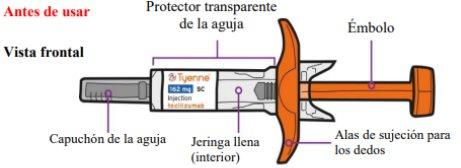
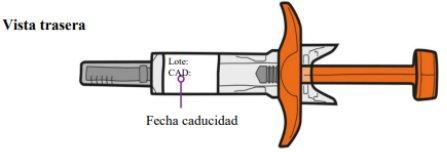

Ненамагайтесь активувати прозорий захист голки до ін'єкції.
КРОК 1: Підготовьте ін'єкцію | |
1.1. Підготовьте плоскую та чисту поверхню, наприклад, стіл або підвіконня, у добре освітленій зоні. 1.2. Необхідні матеріали (Фігура Б):
|
|
1.3. Вийміть коробку Тієнне з холодильника та відкрийте її (Фігура В). |
|
1.4. Вийміть пластикову підкладку Тієнне з коробки:
та чисту. | |
1.5. Залиште шприц-ручку в пластиковій підкладці при кімнатній температурі протягом щонайменше 30 хвилин перед використанням, щоб лікарський засіб досяг кімнатної температури (фігура Г). Ін'єкція холодного лікарського засобу може зробити ін'єкцію незручною та утруднити введення поршня. Не нагрівайте шприц-ручку жодним іншим способом, наприклад, в мікрохвильовій печі, гарячій воді чи прямому сонячному світлі. Не знімайте захист голки, поки шприц-ручка Тієнне досягне кімнатної температури. |
|
1.6. Підготовьте та перевірте свої записи про попередні місця ін'єкцій. Це допоможе вам вибрати відповідне місце ін'єкції для цієї ін'єкції (див. КРОК 8: Запишіть ін'єкцію). | |
КРОК 2: Вимийте руки 2.1. Вимийте руки водою та мильним розчином та висушіть їх добре чистим рушником (Фігура Д). |
|
КРОК 3: Перевірьте шприц-ручку
|
|
Не тримайте шприц-ручку за поршень або захист голки. Якщо ви це зробите, ви можете пошкодити шприц-ручку або активувати прозорий захист голки. 3.1. Перевірьте шприц-ручку, щоб переконатися в:
|
|
|
|
Невикористовуйте шприц-ручку, якщо вона показує будь-які ознаки пошкодження. Якщо це так, зверніться до вашого лікаря або фармацевта та викиньте шприц-ручку в контейнер для видалення колючих предметів (див. КРОК 7: Видаліть шприц-ручку). |
|
3.2. Перевірьте рідину через прозорий захист голки, щоб переконатися в: | |
Невикористовуйте шприц-ручку, якщо рідину є мутною, забарвленою, містить частинки або лусочки чи показує будь-які ознаки пошкодження. Якщо рідину є мутною, забарвленою, містить частинки або лусочки, негайно зверніться до вашого лікаря або фармацевта та викиньте шприц-ручку в контейнер для видалення колючих предметів (див. КРОК 7: Видаліть шприц-ручку). |
|
3.3. Перевірьте етикетку, щоб переконатися в:
Невикористовуйте шприц-ручку, якщо:
Якщо на етикетці не вказано Тієнне або термін придатності минув, зверніться до вашого лікаря або фармацевта негайно та викиньте шприц-ручку в контейнер для видалення колючих предметів (див. КРОК 7: Видаліть шприц-ручку). |
|
КРОК 4: Виберіть місце ін'єкції | |
4.1. Виберіть місце ін'єкції (Фігура М):
Ненамагайтесь використовувати верхню частину руки самостійно. Вводьте ін'єкцію лише в вказаних місцях. |
|
4.2. Виберіть інше місце (щонайменше 3 см відстані від останнього місця ін'єкції) кожен раз, щоб зменшити червоність, подразнення чи інші проблеми з шкірою. Невводьте ін'єкцію в область, яка болить (чутлива), з синяками, червоною, твердою, з шрамами або де є стрії, невуси чи татуювання. Якщо у вас є псоріаз, невводьте ін'єкцію в будь-яку уражену чи пошкоджену область, товсту, підняту чи лускату. | |
КРОК 5: Очистіть місце ін'єкції 5.1. Очистіть шкіру в місці ін'єкції ватною пелюшкою, змоченою спиртом, з рухом кола (Фігура О). Дайте шкірі висохнути перед ін'єкцією. Недуйте чи торкайтеся місця ін'єкції після очищення. |
|
КРОК 6: Застосуйте ін'єкцію 6.1. Вийміть захист голки
Нетримайте поршень, поки виймаєте ковпачок голки. Якщо ви не можете вийняти ковпачок голки, попросіть допомоги в опікуна або зверніться до вашого лікаря.
Ви можете побачити краплі рідини на кінчику голки. Це нормально та не вплине на вашу дозу. Неторкайтеся голки чи дозволяйте їй торкатися будь-якої поверхні після видалення ковпачка голки, оскільки ви можете випадково уколоти себе голкою. |
|
| |
6.2. Пінчуйте шкіру
6.3. Введіть голку Тримайте шприц-ручку, як би ви тримали олівець. |
|
| |
Важливо використовувати правильний кут, щоб забезпечити введення лікарського засобу під шкіру (у жирову тканину); інакше ін'єкція може бути болючою, а лікарський засіб може не подіяти. 6.4. Введіть ін'єкцію
Невиймайте голку зі шкіри, коли поршень повністю натиснутий. | |
| |
6.5. Завершіть ін'єкцію
Система безпеки вийме голку зі шкіри та покриє голку (Фігура Ф).
Важливо:Негайно зверніться до вашого лікаря, якщо:
Введення неправильної кількості лікарського засобу може вплинути на ваше лікування. Неповторно використовуйте шприц-ручку, навіть якщо не було введено всю кількість лікарського засобу. Ненамагайтесь знову накрити голку, оскільки ви можете уколоти себе. |
|
6.6. Після ін'єкції Якщо є кров або рідину на місці ін'єкції, м'яко натисніть вату або марлю на шкіру (Фігура Х). Ви можете використовувати адгезивний бинт, якщо це необхідно. Нетертіте місце ін'єкції. |
|
КРОК 7: Видаліть шприц-ручку 7.1. Видаліть використану шприц-ручку в контейнер для видалення колючих предметів негайно після використання (Фігура Ц). | |
Якщо у вас немає контейнеру для видалення колючих предметів, ви можете використовувати домашній контейнер, який:
Коли ваш контейнер для видалення колючих предметів буде майже повний, вам потрібно буде слідувати місцевим рекомендаціям щодо правильного видалення контейнеру. Невикидайте використані шприц-ручки в домашній смітник. Невикидайте використані контейнери для колючих предметів в домашній смітник, якщо тільки місцеві норми це не дозволяють. Непереробляйте використані контейнери для колючих предметів. |
|
Зберігайте шприц-ручки Тієнне та контейнер для видалення колючих предметів поза зоною досяжності та виду дітей. | |
КРОК 8: Запишіть ін'єкцію 8.1. Щоб допомогти вам пам'ятати, коли та де ви повинні зробити наступну ін'єкцію, запишіть дату, час та конкретну частину тіла, де ви зробили ін'єкцію. (Фігура Ч). Також буде корисно записати будь-які питання чи сумніви щодо ін'єкції, щоб ви могли запитати вашого лікаря. |
|
Якщо у вас є питання чи сумніви щодо шприц-ручки Тієнне, зверніться до вашого лікаря, який знайомий з Тієнне. |
- Країна реєстрації
- Діючі речовини
- Потрібен рецептТак
- Виробник
- Інформація є довідковою і не є медичною порадою. Перед прийомом будь-яких препаратів обов'язково проконсультуйтеся з лікарем. Oladoctor не несе відповідальності за медичні рішення, прийняті на основі цього контенту.
- Альтернативи до ТІЄННЕ 162 мг РОЗЧИН ДЛЯ ІН'ЄКЦІЙ У ПЕРЕДНАПОВНЕНИХ ШПРИЦАХФорма випуску: РОЗЧИН ДЛЯ ІН'ЄКЦІЙ, 162 мгДіючі речовини: tocilizumabВиробник: Celltrion Healthcare Hungary Kft.Потрібен рецептФорма випуску: РОЗЧИН ДЛЯ ІН'ЄКЦІЙ, 162 мгДіючі речовини: tocilizumabВиробник: Celltrion Healthcare Hungary Kft.Потрібен рецептФорма випуску: РОЗЧИН ДЛЯ ІНФУЗІЙ, ЩО ВВОДИТЬСЯ ІН'ЄКЦІЙНО, 20 мг/млДіючі речовини: tocilizumabВиробник: Celltrion Healthcare Hungary Kft.Потрібен рецепт
Аналоги ТІЄННЕ 162 мг РОЗЧИН ДЛЯ ІН'ЄКЦІЙ У ПЕРЕДНАПОВНЕНИХ ШПРИЦАХ в інших країнах
Найкращі аналоги з тією самою діючою речовиною та терапевтичним ефектом.
Аналог ТІЄННЕ 162 мг РОЗЧИН ДЛЯ ІН'ЄКЦІЙ У ПЕРЕДНАПОВНЕНИХ ШПРИЦАХ у Україна
Лікарі онлайн щодо ТІЄННЕ 162 мг РОЗЧИН ДЛЯ ІН'ЄКЦІЙ У ПЕРЕДНАПОВНЕНИХ ШПРИЦАХ
Консультація щодо дозування, побічних ефектів, взаємодій, протипоказань та поновлення рецепта на ТІЄННЕ 162 мг РОЗЧИН ДЛЯ ІН'ЄКЦІЙ У ПЕРЕДНАПОВНЕНИХ ШПРИЦАХ – за рішенням лікаря та згідно з місцевими правилами.



